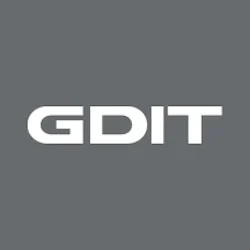Without question, education technology is constantly changing, and so are the needs of students. The sudden shift to remote working, schooling, and training during the pandemic showed all of us how essential it is to have thoughtful, consistent, and available education technology and delivery platforms.
Education technology is a suite of tools and applications that enhance processes. It consists of many components and applications including Learning Management Systems (LMS), Content Management Systems (CMS), virtual classrooms, and Enterprise Resource Planning (ERP) systems, to name a few.
The most effective approach to using education technology is to analyze, design, develop, implement, and evaluate the instructional environment, with the goal of continuous improvement to content, delivery, and learning.
Addressing technology challenges is important. But it is just as important to create a culture of constant learning and evaluation.
Because we have come to expect education technology to be present in every aspect of life to enhance learning, it’s never been more important for agencies to evaluate and upgrade their education technology.
Transforming information into knowledge, transferring knowledge through technology
GDIT is known as a top tier Information Technology Company. We pride ourselves on providing innovative and industry leading IT support in education and training. We facilitate the transformation of information into knowledge by converting data into relevant, clear, and concise content. GDIT partners with agencies to evaluate and update their learning ecosystems and helps ensure education technology is a catalyst, not a hindrance, for success. We select, exploit, and improve technical learning platforms to serve as outstanding mechanisms for knowledge transfer.
We believe in four education technology imperatives leaders must consider when upgrading their legacy training environments:
1. Evaluate applications regularly to ensure they are current and effective.
Educators and technology leaders must collaborate to ensure technology initiatives align with overall organizational priorities to create flexible, high quality learning environments for all students.
Contemporary education technology has enabled businesses, governments, and schools to perform more efficiently. As such, we have come to expect education technology to be present in every aspect of life and to enhance learning. Real-time information and communications are available at our fingertips and, if properly implemented, can improve education.
2. Prepare to replace any suboptimal systems or technologies.
Newer technology can substantially improve capabilities, yield cost savings, and lead to increased efficiency, student engagement, and educational success. The shortcomings of legacy systems forced many organizations to quickly reassess current setups and start migrating to systems that met the demands of the new landscape. This gave more capabilities and better assistance to educators, resulting in learning experiences that fostered inclusivity and boosted the learning potential of all students. This degree of agility, pivoting when it becomes clear it’s necessary, must continue.
3. Review upgraded technology solutions and how those fit within your learning environment.
The purpose of properly aligned education technology is to enhance the learning experience. Two factors that are key to the success of online learning initiatives are students’ success and teachers’ evaluation of the tools. Therefore, it is important to consult these two essential stakeholder groups, alongside your IT teams, to evaluate how to improve existing solutions or, if necessary, how to integrate and optimize new ones.
4. Ensure gains outweigh any deficiencies left by upgrading legacy technology.
Education technology is so valuable because it can address learning needs across categories: Synchronous and Asynchronous; Linear Learning; and Collaborative Learning.
Agencies should ensure that gains from replacement technology enable all of the types of learning their organizations use, provide opportunities for additional learning experiences, and that it enhances the overall experience for users.






